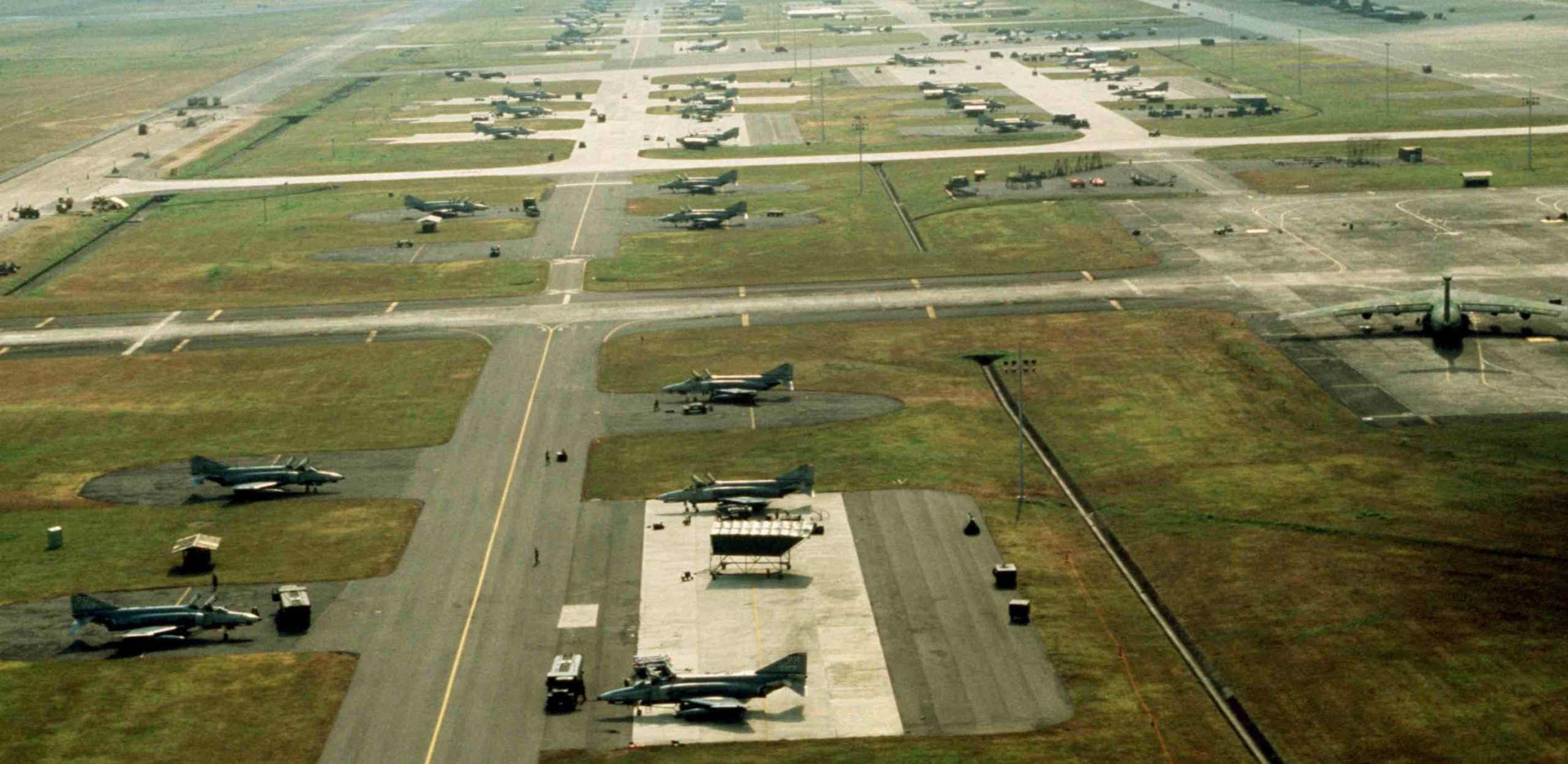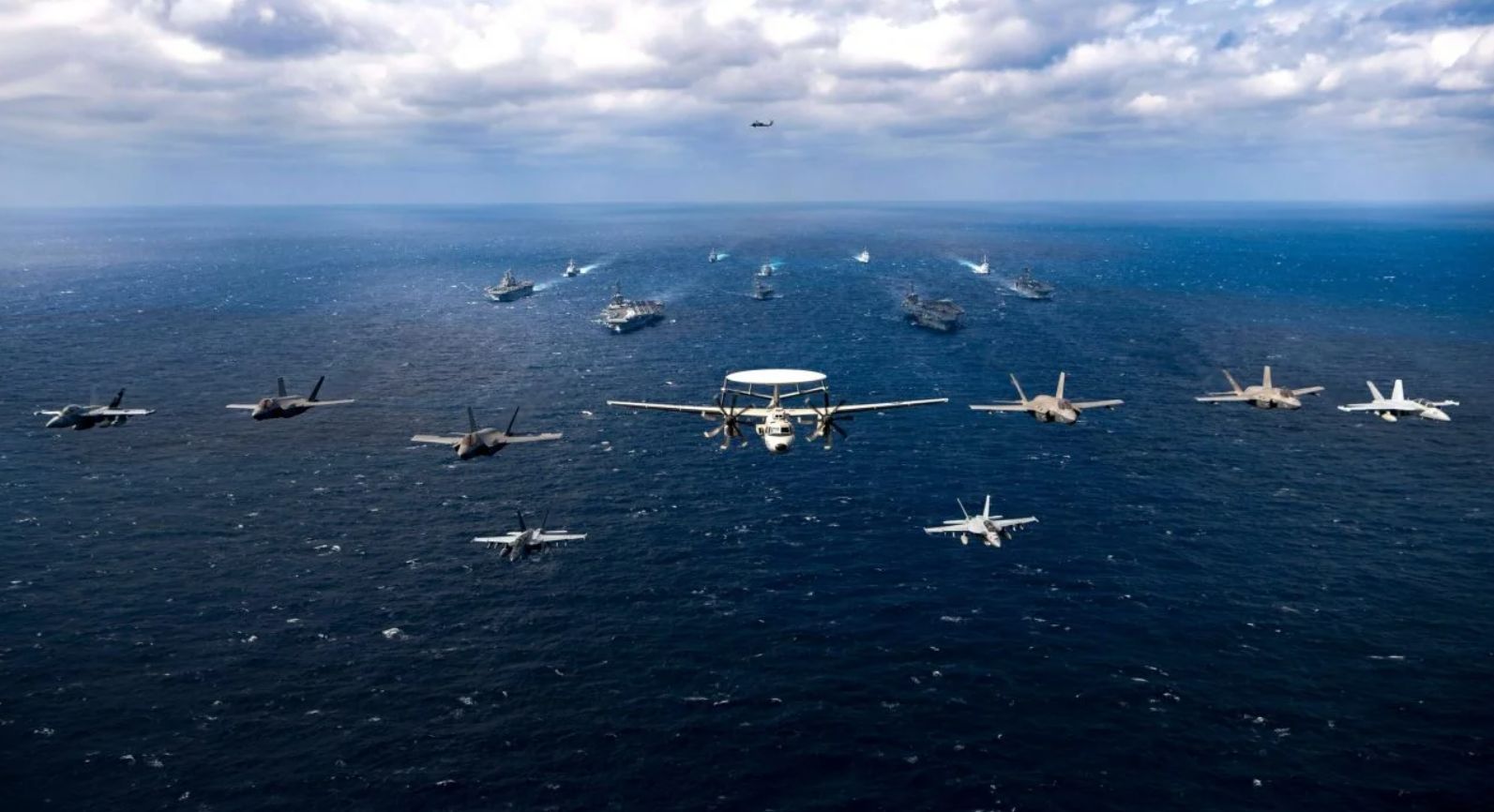Former House speaker of the US Senate Nancy Pelosi’s ‘unilateral’ decision to visit Taiwan in August 2022 raised the specter of the Chinese invasion of Taiwan.
Although China initiated no direct military action, the Chinese military staged large-scale military drills close to Taiwan and called them pre-planned war games.
China even fired SSMs (surface-to-surface missiles) over Taiwan into the Pacific to raise the hype. Chinese war games were not confined to Taiwan Strait and surrounding areas around Taiwan but also stretched well into Bashi Channel, the water body separating Taiwan and the Philippines.
US, Philippines Military Association
In the post-World War 2 era, the Philippines has the unique distinction of having the largest USAF and US Navy base outside the mainland USA.
However, due to strained relations in the early 90s, both bases were shut down after the Philippines senate declined to grant a further extension. However, US forces were back in the Philippines in 1999 to participate in a large-scale exercise under a Visiting Forces Agreement (VFA).
But during Duterte’s rule, the Philippines established closer links with China rather than maintaining relations with the USA. He was close to canceling VFA even though the Philippines and China were contesting a case regarding ownership of a few islands in the South China Sea.

The Permanent Court of Arbitration (PCA) judgment favored the Philippines, which China refused to accept. The USA openly advocated that China obey the decision of PCA.
China started building artificial islands in the South China Sea to cement its claim over the entire South China Sea. This act was seen to be detrimental to the security of nations close to the South China Sea.
Reaffirmation Of Military Association
The current President of the Philippines assumed office in mid-2022. His first and foremost priority was to rekindle the military association with the USA, which had touched a new low during Duterte’s rule.
The latest visit by US Defense Secretary Lloyd Austin has to be seen in this context. His visit aims to re-establish and renew old associations and take them to a new level altogether by convincing Manila to increase the strength of US troops to counterbalance the evolving Chinese threat.
The USA has tried to convey to Manila and possibly succeeded that any Chinese offensive against Taiwan will have direct adverse consequences for the Philippines.
Currently, the USA has five bases in the Philippines:
- Fort Magsaysay
- Cesar Basa Air Base
- Lumbia Air Base
- Ebuen Air Base,
- Antonio Bautista Air Base
The US was granted access to these locations in 2016. It has projected that to counter the Chinese threat, the presence of US forces in the north Philippines needed to look into a few more locations. After carrying out joint recce during the past two years, the USA has proposed five new locations. These are:
- Isabela (1) and Cagayan (2) in the north.
- Palwan (1)
- Zambales (1)
US Military will move to the new bases under the new Enhanced Defense Cooperation Agreement (EDCA). Lloyd Austin’s visit and a new agreement with Manila is an unambiguous message to China that any misadventure in and around Taiwan will invite a US response.
Chinese Response
As expected Chinese have reacted adversely to the latest visit to Manila by US Defense Secretary. The spokesperson for the Chinese Foreign Ministry has directly accused the USA of warmongering and threatening regional peace by the unwarranted intrusion.
Chinese media, both print and visual, have condemned the US decision to increase military presence in the region.
The Chinese leadership was extremely satisfied with improving relations with Manila under the Duterte regime. But the Beijing-Manila honeymoon is set to meet adverse weather politically and militarily.
China has openly stated that a military option is open if Taiwan does not agree to shed its independent nation status.

The strategic importance of the Philippines to China is only too well known. Any Chinese military offensive against Taiwan will necessarily travel through the Bashi channel. The presence of the US military nearby will directly threaten the Chinese assault force transiting through the channel.
The South China Sea is set to become an area of extreme hostility, which will invite the presence of modern military equipment on land and at sea. China’s twin objectives of annexing Taiwan and controlling the South China Sea might not fructify as quickly as China may have appreciated.
However, a hostile Chinese attitude towards its smaller neighbors, viz Taiwan, Japan, etc., will almost certainly invite a permanent US presence in the region.
- Gp Cpt TP Srivastava (Retd) is an ex-NDA who flew MiG-21 and 29. He is a qualified flying instructor. He commanded the MiG-21 squadron. He is a directing staff at DSSC Wellington and chief instructor at the College of Air Warfare. VIEWS PERSONAL
- Follow EurAsian Times on Google News




